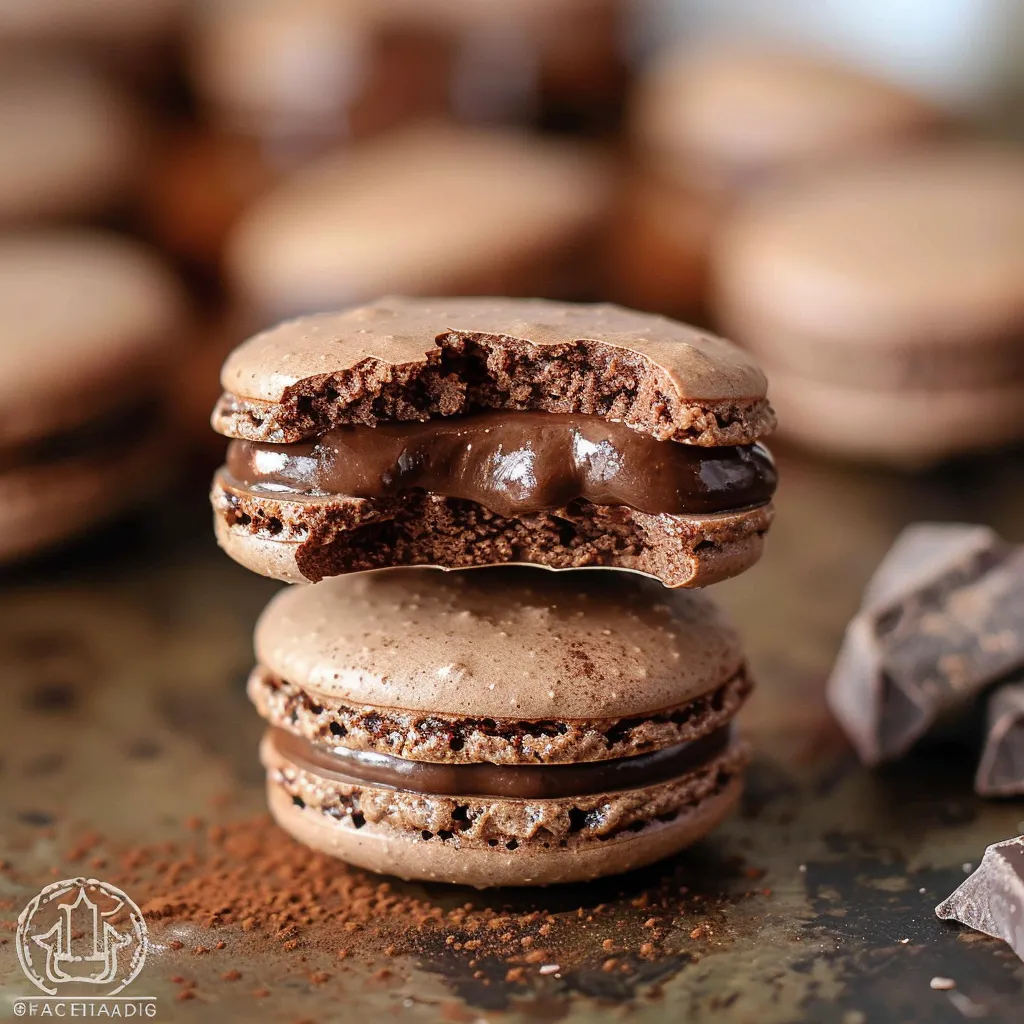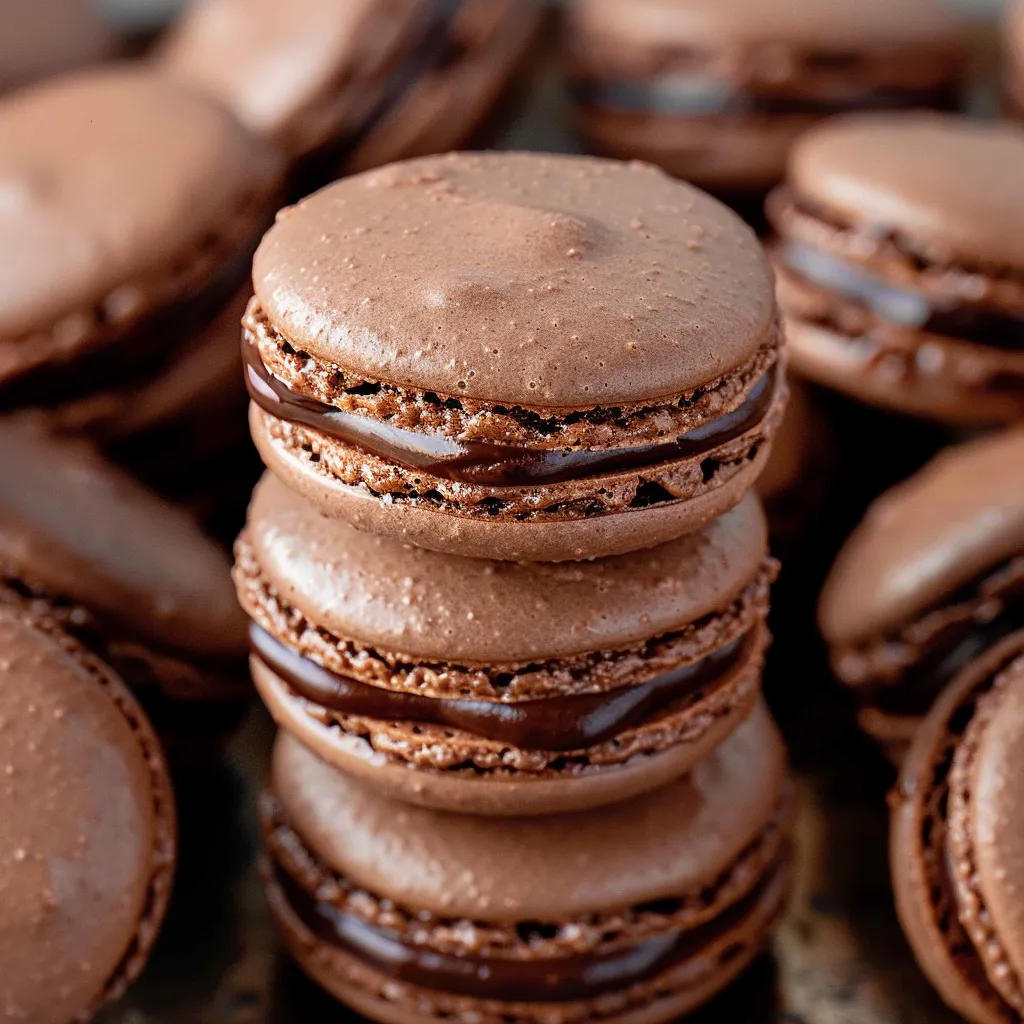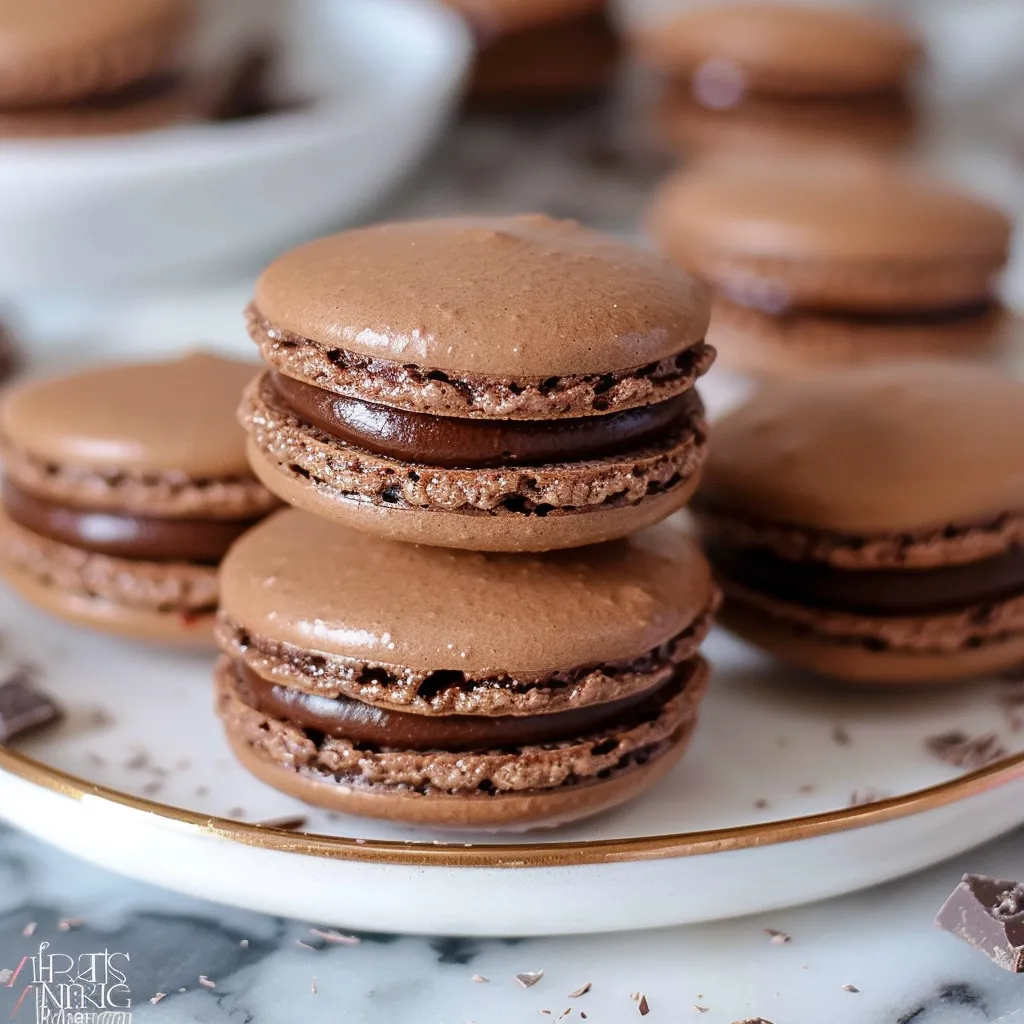 Pin to Favorites
Pin to Favorites
The first bite of a perfectly crafted chocolate macaron delivers an enchanting contrast of textures—a delicate, crisp shell that shatters slightly before giving way to a chewy interior, all complemented by the silky smoothness of rich chocolate ganache. These elegant French confections possess a complexity that belies their simple appearance, with the subtle notes of chocolate deepened by a whisper of espresso that most tasters can't identify but instinctively appreciate. The balance of sweetness and depth creates an experience that lingers pleasantly, making it nearly impossible to stop at just one.
Last Christmas, I brought a box of these to my sister's dinner party. Her teenage daughter, who had been attempting macarons for months with mixed results, begged for the recipe. We spent the following weekend baking together, and her expression when she bit into her first successful batch was pure magic.
Essential Ingredients and Selection Tips
- Almond Flour: Look for blanched, superfine almond flour rather than almond meal. Sift twice if the grind appears coarse for the smoothest shells.
- Egg Whites: Age for 24-48 hours in the refrigerator before using. Bring to room temperature for improved stability.
- Cocoa Powder: Use Dutch-processed cocoa for a richer, deeper chocolate flavor and darker shell color.
- Instant Espresso Powder: Enhances chocolate flavor without adding coffee taste. Even a small amount makes a noticeable difference.
 Pin to Favorites
Pin to Favorites
The quality of these ingredients significantly impacts your macarons. After years of experimentation, I've found that investing in premium almond flour and chocolate creates a noticeably superior end product.
Detailed Cooking Instructions
- Prepare Your Environment:
- Ensure a dry, cool kitchen. Gather all tools: digital scale, sifter, stand mixer, piping bag, and silicone mats or parchment paper.
- Sift Dry Ingredients:
- Combine 100g almond flour, 120g powdered sugar, 15g cocoa powder, and ¼ tsp espresso powder. Sift twice.
- Prepare the Meringue:
- Whip 100g room temperature aged egg whites to frothy, then add ¼ tsp cream of tartar. Gradually add 50g sugar, whipping to stiff peaks.
- Macaronage:
- Fold dry ingredients into meringue in 40-50 folds. The batter should flow like lava and form ribbons that disappear in 20-30 seconds.
- Piping:
- Transfer batter to a piping bag. Pipe 1½-inch rounds onto lined trays, leaving space between them.
- Tap Out Air Bubbles:
- Firmly tap trays against the counter to release bubbles. Use a toothpick to pop any visible ones.
- Rest:
- Let shells sit for 30-45 minutes until a skin forms—touch lightly; it should not be sticky.
- Bake:
- Preheat oven to 300°F (150°C). Bake for 16-18 minutes, one tray at a time, until firm with visible “feet.”
- Cool Completely:
- Leave macarons on trays to cool before removing.
- Make Ganache:
- Pour 120ml hot heavy cream over 120g chopped semi-sweet chocolate. Stir after 2 minutes, then add ⅛ tsp espresso powder.
- Assemble:
- Pipe ganache onto half the macaron shells, then sandwich with matching shells.
- Mature:
- Refrigerate in an airtight container for 24 hours before serving for best texture.
My first macaron attempt was a disaster—flat, hollow shells with no feet. Through dozens of batches and meticulous note-taking, I've learned that precision and patience are the keys to mastery.
The espresso powder secret transforms ordinary chocolate macarons into something extraordinary. A French pastry chef once told me that a pinch of espresso enhances chocolate like salt enhances savory dishes—just enough to deepen the flavor without overpowering.
Once assembled, refrigeration allows flavors to meld and the shells to soften slightly. This maturation process ensures that perfect harmony of crisp-chewy-creamy textures.
The chocolate macaron has a fascinating history dating back to early 20th century Paris, perfected by Ladurée. This version, enhanced with espresso, brings modern depth while maintaining the classic technique.
I've served these at dinner parties, packed them as elegant gifts, and even created macaron towers for special occasions. Their delicate beauty and rich chocolate flavor make them an irresistible indulgence.
There’s a particular pride in mastering a technique that challenges even experienced bakers. When you present a plate of these chocolate macarons, you're sharing the culmination of patience, skill, and a touch of culinary magic.
 Pin to Favorites
Pin to Favorites
Frequently Asked Questions
- → Why do I need to let the macarons rest before baking?
- Resting allows the macarons to form a dry skin on top, which helps them develop their characteristic 'feet' (the ruffled bottom edge) when baking. Without this dry skin, steam would escape from the top instead of forcing the macarons to rise from the bottom.
- → Why did my macarons crack during baking?
- Cracking usually happens when macarons haven't rested long enough to form a dry skin, the oven temperature is too high, or there are air bubbles in the batter. Make sure to tap the trays firmly after piping and let the shells rest until they're no longer sticky to the touch.
- → Can I make macarons without almond flour?
- Traditional macarons require almond flour for their texture and flavor. While you can experiment with other nut flours like hazelnut or pistachio, avoiding nuts entirely will significantly change the character of the macaron.
- → Why didn't my macarons develop 'feet'?
- Macarons may not develop feet if the batter is too wet, they haven't rested long enough, the oven temperature is too low, or the meringue was under-whipped. Ensure your meringue reaches stiff peaks and the piped shells form a skin before baking.
- → Can I freeze chocolate ganache macarons?
- Yes, assembled macarons freeze well for up to 2-3 months in an airtight container. Thaw them in the refrigerator overnight, then bring to room temperature before serving for the best texture and flavor.
